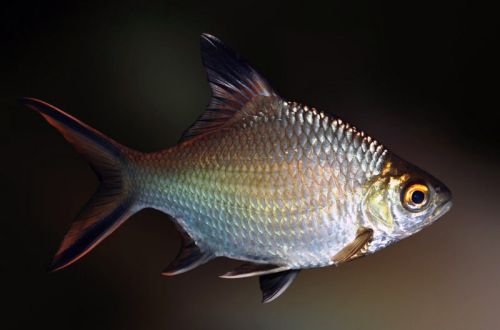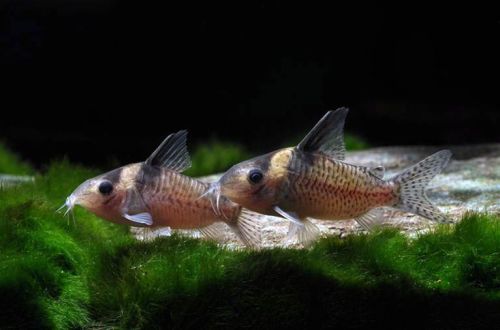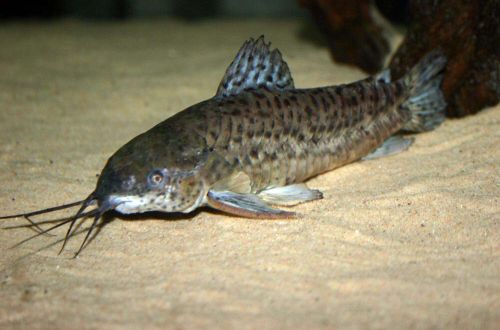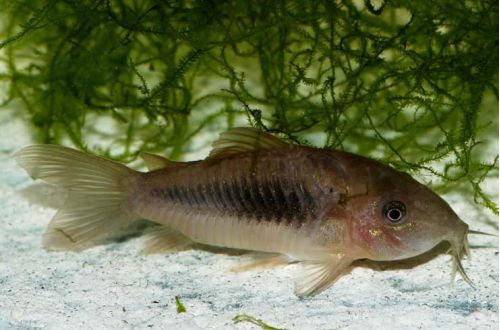
Barbus lanceolate
The bream-like barb, scientific name Barbonymus schwanefeldii, belongs to the Cyprinidae family. Due to its impressive size, silvery coloration and the desire to stay in a flock, it becomes clearly visible, attracts attention, therefore this species is mainly used in a commercial aquarist, in tanks installed in public places (large offices, shopping centers, etc.). extremely rare in home aquaria.

At home in Asia, it is also rarely found in aquariums, since it belongs to commercial fish and does not evoke aesthetic feelings among the local population. An ordinary European has a similar attitude towards an ordinary carp sold in the live fish section of a supermarket.
Contents
Habitat
It is now widely distributed throughout Southeast Asia, including several major river systems, including the Mekong and Chao Phraya. Thought to be extinct in what is now Singapore, wild specimens have recently been discovered, indicating a resurgence in the population.
They live in large river channels with high water levels, in floodplain coastal areas, as well as in the flooded forest substrate during the rainy season, where they swim to lay their eggs. As the water recedes, they return to the rivers.
Description
A large fish with a high laterally compressed body, shaped like a Central European river bream. Adults often reach impressive sizes up to 35 cm in length. There are practically no external differences between males and females, only during the spawning period, females begin to noticeably round off from caviar. The color is silvery, sometimes with a golden hue. The fins and tail are red with distinct dark strokes along the edges.
A close relative of the bream-like Barbus is the red-tailed Barbus, which is distinguished by its smaller size and the absence of dark strokes in the color of the fins and tail, otherwise they are very similar and are often confused.
Food
They accept all kinds of dry, frozen, live and vegetable products, they will also eat pieces of cabbage, spinach, lettuce and other vegetables and fruits with pleasure. They can also swallow smaller fish – a neighbor in the aquarium. Feed 2-3 times a day in the amount eaten in 5 minutes, it is important not to overfeed the fish, as it does not feel full, which can result in digestive problems.
Maintenance and care, arrangement of the aquarium
The maintenance of such large fish is troublesome and costly, so they are rarely found in a home aquarium, although in general the bream-like Barbus is rather unpretentious. The design can be anything, the fish will feel great even in a completely empty tank, but if you have the funds to purchase a huge aquarium from 500 liters, then you should not save on decor. Imitation of a river bed looks like the most natural way to decorate an aquarium – the substrate is rocky with several large smooth boulders, a volumetric background resembling a coast, and a few snags. Living plants, although they serve as decoration for the aquarium, in this case will be quickly exterminated.
Fish make much more serious demands on water quality. It comes from flowing clean waters rich in oxygen, and therefore intolerant of the accumulation of organic waste. The water must be crystal clear. As for its parameters, the range of acceptable pH values has fairly wide fluctuations, and the amount of dissolved calcium and magnesium salts is at a low level. More about pH and dGH parameters in the section “Hydrochemical composition of water”.
Big aquarium – big equipment. Of key importance is the filtration system, which consists of at least two filters working in tandem, or, if power permits, duplicate each other in case one of them fails or breaks down. Other important equipment is the lighting, aeration and heating system, and the heating elements should be masked to avoid accidental damage by fish.
Maintenance comes down to weekly replacement of part of the water with fresh water (15–20% of the volume) with identical pH, dGH and temperature parameters and regular cleaning of the soil from organic waste.
Behavior and Compatibility
A flock species, it is necessary to keep in a group of 6 individuals, with a lack of communication with their own kind, cases of aggression or, on the contrary, sluggish behavior are not uncommon. By themselves, they are not predators, but on occasion they can eat smaller fish. Compatible only with other large or medium-sized species from among cyprinids, catfish and even cichlids.
Breeding / breeding
The mating season begins with a change in external conditions caused by the onset of the rainy season, and subsequent migration to the flooded regions of the rainforest. This behavior determines the difficulty in breeding the breamy barb at home and requires huge reservoirs with variable water parameters. For the aquarium trade, fish are either caught from the wild or bred in specialized nurseries using hormonal stimulation.





